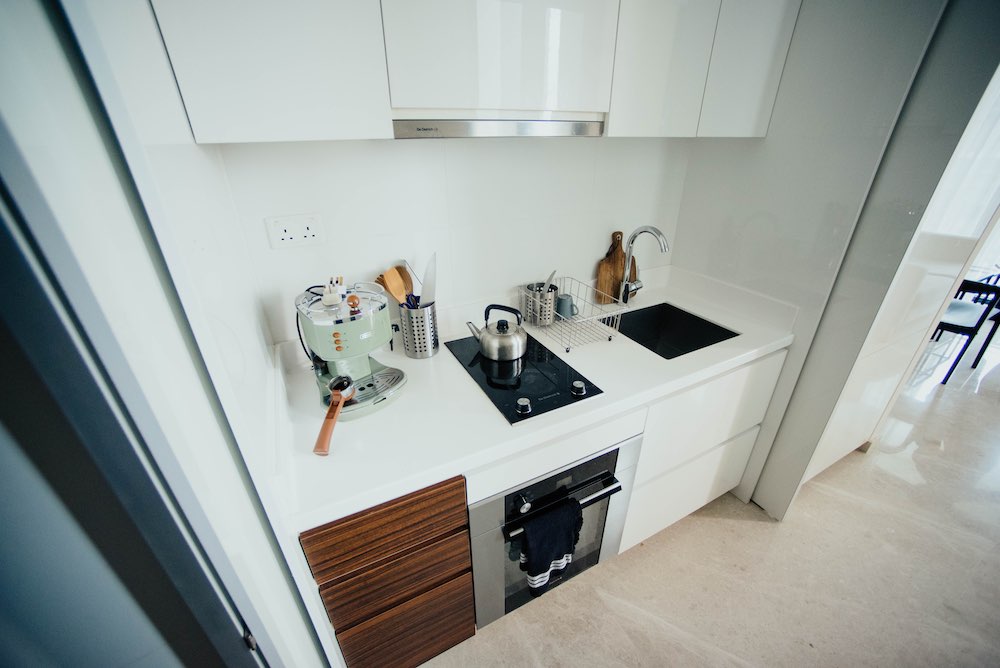How To Stop White Paint From Turning Yellow

Oil-based paints are incredibly durable. You can scrub them again and again without affecting their colour or finish. The problem is that some of the chemicals used in oil-based paints can cause them to yellow over time. This isn’t too much of a concern unless your paint is white, in which case, yellowing can seriously impact the overall look of your interior. Here are a few ways you can stop white paint from turning yellow.
Find out why your white paint is turning yellow
The most common cause of this phenomenon is exposure to sunlight, which can cause certain types of paint to oxidise and change colour over time. Additionally, environmental factors such as excessive moisture, high temperatures, and cigarette smoke can also contribute to this yellowing process. Moreover, certain chemicals in the paint, including alkyd and solvent-based paints, may react over time with white pigments, leading to yellowing.
If you are noticing your white walls turning yellow, it's important to identify the potential causes so you can take the appropriate steps to address them and prevent further discolouration.
Use latex paint instead
We examined the pros and cons of water- and oil-based paints in a previous article. One of the key advantages of opting for latex (water-based) paint over oil-based paint is its capacity to remain true to colour, despite environmental factors.
So, if you have the choice, use latex paint instead. That way, you can be 100% sure your white paint will stay bright for years to come.
Maximise light to stop white paint from turning yellow
Light – both natural sunlight and artificial light – can significantly slow down the yellowing process. It can even reverse it.
With this in mind, you can stop white paint from turning yellow by only using oil-based paints in rooms and areas that receive high levels of light.
In rooms where light is limited, strategically placed mirrors can amplify natural light, and implementing a robust artificial lighting plan can help.
Location, location, location
Oil-based paint offers excellent durability against water damage repair and mildew, which is why it’s a popular choice in kitchens and bathrooms. If that’s where you have decided to use white oil-based paint, pay careful attention to its location.
Avoid painting areas directly next to white countertops, tiles, or cabinets. These will stay bright white for years, as they contain powerful anti-yellowing chemicals. If your white paint exhibits even the slightest amount of yellowing, it will be extremely apparent against the stark white of neighbouring features.
Steer clear of ammonia
Don’t use ammonia to clean rooms and areas that are painted with oil-based paints, as ammonia is known to speed up the yellowing process.
What’s more, if you are using a mix of oil- and water-based paints, be sure to apply all water-based paints first. Water-based paints release ammonia into the air as they dry, causing your fresh coat of oil-based paint to yellow prematurely.
Take control of environmental factors
Different environmental factors can speed up the yellowing process.
Take moisture, for example. It can sneak into the paint, especially in humid spaces like bathrooms, kitchens, and basements, triggering a reaction that slowly but surely turns your white paint yellow. But don't worry, there's an easy fix. Installing a good exhaust fan can do wonders to increase ventilation and prevent excess moisture. Just make sure that the fan's capacity matches your room size for the best results. You can also consider using a dehumidifier in these areas. It can make a big difference, especially during those humid months.
Having an overhead exhaust fan in your kitchen is also an effective countermeasure for preventing airborne cooking grease from settling onto your walls and ceilings and giving your paintwork a yellowish hue.
And finally, let's talk about cigarette smoke. The nicotine it contains can leave a yellowish residue on your walls over time, taking the shine off your white paint. So what's the best way to tackle this? Simply avoid smoking indoors. Prevention, in this case, is indeed better than a cure.
Get help from the professionals
If your interior is suffering from yellowing paint, our expert interior painters in Brisbane can help. Our experienced and passionate team of painters can add a fresh coat of white paint to your walls, lightening and brightening your indoor space. Get in touch today on 07 3829 5735 or fill out the form on this page, and we’ll be in contact as soon as possible.


